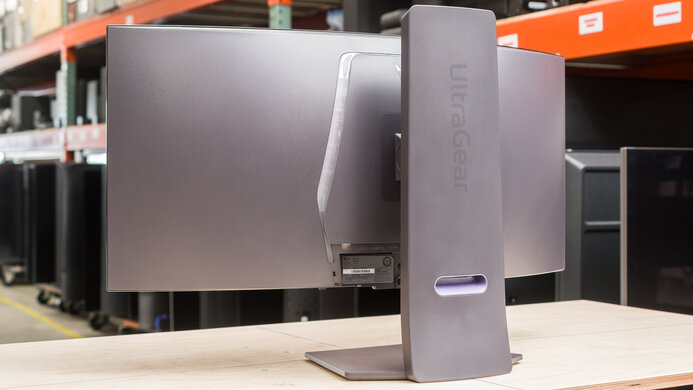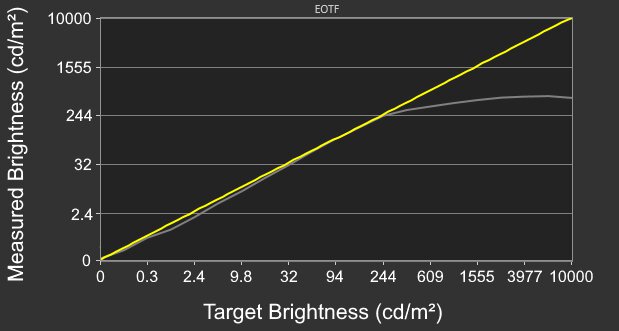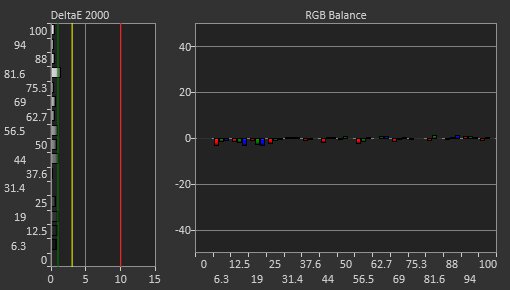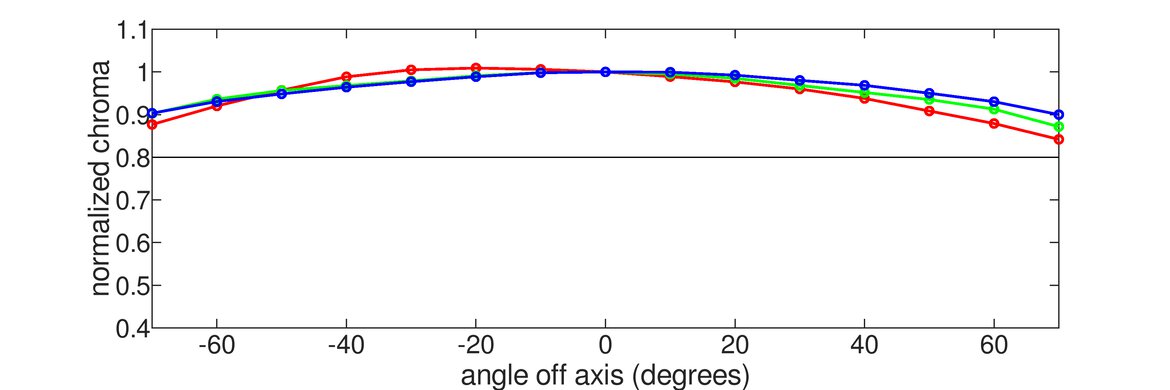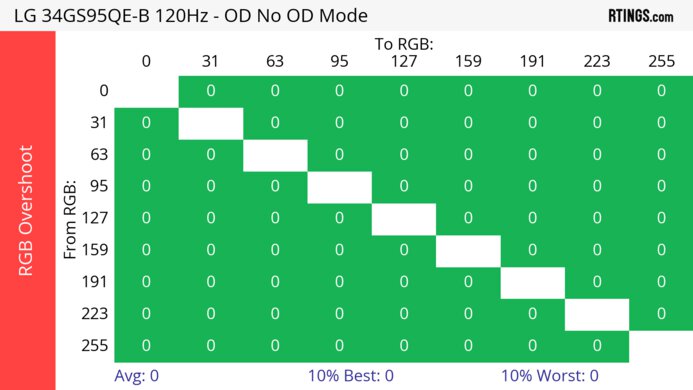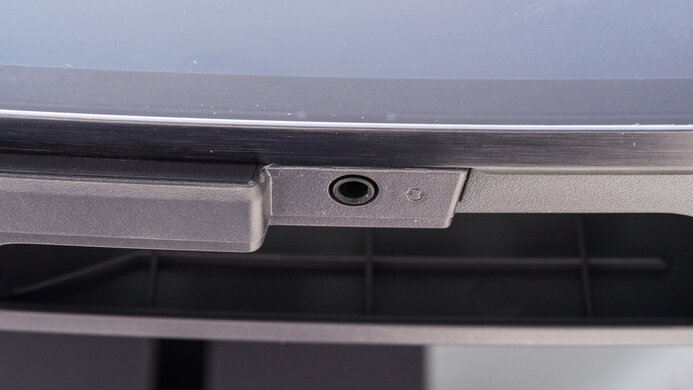The LG 34GS95QE-B is a high-end 34-inch ultrawide gaming monitor with a 3440x1440 resolution and 800R curve. With an OLED screen and 240Hz refresh rate, it competes alongside other monitors that use the same panel, like the ASUS ROG Swift OLED PG34WCDM and the Acer Predator X34 X. As part of the 2024 LG UltraGear gaming lineup, it sits alongside other OLED monitors, like the LG 27GS95QE-B and the LG 39GS95QE-B, which are different sizes. It comes with features you'd expect to find in a premium gaming monitor, like FreeSync and G-SYNC compatibility, and HDMI 2.1 bandwidth. Its audio output also supports DTS Headphones:X for 3D audio. Lastly, it comes with a two-year warranty that covers the OLED panel, although this can vary by region.
Our Verdict
The LG 34GS95QE-B is incredible for PC gaming. Its fast 240Hz refresh rate is ideal even for competitive gaming, and it supports all common VRR formats to reduce screen tearing. It has an exceptionally fast response time, so there's almost no blur behind fast-moving objects, and it has low input lag, so gaming feels responsive. It also has near-infinite contrast, so it displays deep blacks next to bright highlights, which is great for gaming in dark rooms. One downside is that it has noticeable VRR flicker in dark scenes with changing frame rates, which is disappointing if your game can't maintain consistent frame rates.
- Near-instantaneous response time.
- Displays deep and inky blacks.
- 240Hz refresh rate and VRR support.
- Low input lag.
- No blooming around bright objects.
- Noticeable VRR flicker with changing frame rates.
The LG 34GS95QE-B is amazing for console gaming. It supports all signals from the PS5 and Xbox Series X|S, but it downscales 4k signals as it isn't a true 4k monitor, and the consoles don't support ultrawide gaming, so you'll see black bars on the sides. Luckily, it offers fantastic gaming performance with an exceptionally fast response time and almost no blur behind fast-moving objects, and it also has low input lag for a responsive feel. Lastly, it delivers outstanding picture quality with deep blacks next to bright highlights.
- Near-instantaneous response time.
- Displays deep and inky blacks.
- Low input lag.
- Supports any signal from the PS5 and Xbox Series X|S.
- No blooming around bright objects.
- Consoles don't support ultrawide gaming.
The LG 34GS95QE-B is decent for office use, but there are some limitations. It has a large 34-inch screen that makes it easy to place multiple windows side-by-side, but it may take time to get used to its aggressive curve. It also has decent ergonomics and wide viewing angles that help you share the screen with someone else. However, it has text clarity issues due to its subpixel layout, and while it has excellent reflection handling, it doesn't get bright enough to fight really intense glare. It also has an aggressive curve that makes it harder to use if you're not used to using curved screens. Unfortunately, OLEDs like this can burn-in with constant exposure to the same static elements over time, which is disappointing for office use.
- 34-inch ultrawide screen.
Excellent reflection handling.
- Wide viewing angles.
- Text clarity issues due to subpixel layout.
- Risk of burn-in.
- Not bright enough to fight intense glare.
The LG 34GS95QE-B is excellent for content creation, but there are some limitations. It delivers outstanding picture quality with deep and inky blacks next to bright highlights, and it also displays a wide range of colors. It even has fantastic accuracy before calibration. It also has a large screen that's great for viewing most of your video timeline at once, but it has text clarity issues due to its subpixel layout. On top of that, OLEDs like this one can burn-in with constant exposure to the same static elements over time, like if you only use the same editing program.
- Displays deep and inky blacks.
- 34-inch ultrawide screen.
Excellent reflection handling.
- Wide viewing angles.
- Fantastic accuracy in sRGB mode.
- Text clarity issues due to subpixel layout.
- Risk of burn-in.
- Not bright enough to fight intense glare.
The LG 34GS95QE-B has decent brightness. While it doesn't get bright enough to fight really intense glare, it's still fine if you have it in a room with a few lights around. It also makes small highlights stand out against the rest of the image, and it has some picture modes that can get even brighter, although they're less accurate.
- Small highlights pop in HDR.
- Not bright enough to fight intense glare.
The LG 34GS95QE-B has a near-instantaneous response time, leading to exceptionally crisp motion.
- Near-instantaneous response time.
- Outstanding refresh rate compliance.
The LG 34GS95QE-B is remarkable for HDR. It displays deep blacks in dark rooms, and there isn't any blooming around bright objects either. It also displays a wide range of colors in HDR, but not all colors are bright and vivid.
- Displays deep and inky blacks.
- No blooming around bright objects.
- Not all colors are bright and vivid.
The LG 34GS95QE-B has outstanding picture quality in SDR. It displays deep and inky blacks without any blooming, and it also displays a wide range of colors.
- Displays deep and inky blacks.
- Wide color gamut.
The LG 34GS95QE-B has incredible color accuracy. Its dedicated sRGB mode is also extremely accurate, and you don't need to calibrate it to achieve the most accurate colors. It also has amazing gray uniformity, so the image remains consistently accurate throughout the screen.
- Fantastic accuracy in sRGB mode.
- Amazing gray uniformity.
Performance Usages
Changelog
- Updated Nov 10, 2025: We've converted this review to Test Bench 2.1.1. We removed the Vertical Viewing Angle test.
-
Updated Jun 13, 2025:
We updated text throughout to match the new and updated tests with Test Bench 2.1, including in the Verdict section.
- Updated Jun 13, 2025: We've converted this review to Test Bench 2.1. This includes new tests for Direct Reflections, Ambient Black Level Raise, and Total Reflected Light. You can see all the changes in the changelog.
- Updated Feb 21, 2025: We've converted this review to Test Bench 2.0.1. This includes a new test result for DisplayPort 2.1 Transmission Bandwidth.
Check Price
Differences Between Sizes And Variants
We tested the 34-inch LG 34GS95QE-B, which is the only size available for this monitor. The full model code may vary between regions, and the results are also valid for any regional variants. That said, this monitor is different from other OLEDs in the LG UltraGear lineup, including the 39-inch ultrawide LG 39GS95QE-B.
| Model | Size | Resolution | Panel Type | Refresh Rate |
|---|---|---|---|---|
| 34GS95QE-B | 34" | 3440x1440 | OLED | 240Hz |
Our unit was manufactured in February 2024; you can see the label here. It was tested with firmware 3.01, 2.02.
Popular Monitor Comparisons
The LG 34GS95QE-B is an incredible PC gaming monitor that provides both premium picture quality and exceptional motion handling. Its 240Hz refresh rate is great even for competitive gamers, and it supports HDMI 2.1 bandwidth to take advantage of gaming consoles and modern graphics cards. It's a good alternative to the LG 27GS95QE-B if you want an ultrawide screen and don't mind the aggressive curve, and while it doesn't have as many productivity features as the ASUS ROG Swift OLED PG34WCDM, as it lacks a USB-C port and KVM switch, it's still an incredible choice for pure gaming. That said, it doesn't deliver the same vivid colors as an ultrawide QD-OLED, like the Dell Alienware AW3423DWF.
Also see our recommendations for the best ultrawide gaming monitors, the best 34-49 inch monitors, and the best curved gaming monitors.
The LG 34GS95QE-B and the Dell Alienware AW3425DW are both ultrawide gaming monitors with different types of OLED panels. The Dell has a QD-OLED panel that allows it to get brighter with small highlights and display more vivid colors. The Dell also has a glossy coating that results in clearer images, but more mirror-like reflections than the matte coating of the LG. The main advantage of using the LG in a bright room is the fact that its black levels don't rise much, whereas blacks look purple in bright rooms on the Dell.
The Dell Alienware AW3423DWF and the LG 34GS95QE-B are both ultrawide gaming monitors, but they have a few differences. The LG has a higher 240Hz refresh rate, which is ideal for competitive gamers. It also has HDMI 2.1 bandwidth, which is great if you want to take full advantage of your HDMI 2.1 graphics card. However, the Dell is the better choice if you care about having the best picture quality possible, as it displays more vivid colors and brighter highlights than the LG.
The LG 34GS95QE-B and the MSI MPG 341CQPX QD-OLED are both 34-inch 240Hz OLED gaming monitors. The MSI is better if you want the most vivid colors. However, the LG is a better choice if you're gaming in a brighter room, as deep blacks don't have a purple tint in those conditions unlike the MSI.
The Dell Alienware AW3423DW and the LG 34GS95QE-B are both ultrawide OLED gaming monitors. The LG is a better option for competitive gamers, as it has a higher refresh rate and lower input lag. However, the Dell is a better option for those who play a lot of immersive games, as it has more vivid colors.

We buy and test more than 30 monitors each year, with units that we buy completely on our own, without any cherry-picked units or samples. We put a lot into each unbiased, straight-to-the-point review, and there's a whole process from purchasing to publishing, involving multiple teams and people. We do more than just use the monitor for a week; we use specialized and custom tools to measure various aspects with objective data-based results. We also consider multiple factors before making any recommendations, including the monitor's cost, its performance against the competition, and whether or not it's easy to find.
Test Results

The LG 34GS95QE-B has a simple, yet sleek, design that's different from previously-released LG UltraGear monitors. It has a smooth back panel and there's RGB lighting too. It also has an aggressively curved screen that may take time getting used to if you've never used a curved screen.
The build quality is great. It's made entirely of plastic that feels good, but isn't as premium as on other monitors. The back panel is solid as it doesn't easily flex, and the stand holds the screen well. That said, the biggest downside is that the screen on our unit isn't uniformly curved as the edges of the screen are warped, as you can see here. However, it's possible that not every unit experiences this issue.
The ergonomics are decent, especially for an ultrawide monitor. It offers most adjustments, but it has a limited swivel range, which is disappointing if you need to turn the screen for someone next to you. Luckily, the stand has a cutout for cable management.
The measured thickness of the display is from the edges to the back of the screen, but the thickness from the center of the screen to the back is 2.4 inches (6.0 cm).
OLED panels like this one don't have a backlight, so they don't require a local dimming feature. However, with a near-infinite contrast ratio, there isn't any blooming around bright objects, and it's the equivalent of a perfect local dimming feature. We still film these videos on the monitor so you can see how the screen performs and compare it with a monitor that has local dimming.
The SDR brightness is okay. It gets bright enough to fight glare in most well-lit rooms, but it isn't bright enough to fight glare from really bright sources, like if you have it opposite a sunny window. Luckily, it keeps its brightness consistent enough across different content that it isn't distracting. These results are from after calibration in the 'Gamer 2' Game Mode, Brightness at '100', Smart Energy Saving off, and Peak Brightness on 'Low'. However, you get a slightly dimmer minimum brightness with Peak Brightness off, and while setting it to 'High' results in a slightly brighter image, it's less accurate.
The 'Gamer 1' mode gets a bit brighter, but it's less accurate. You can see the brightness results for it below:
- Real Scene 243 cd/m²
- Peak 2% Window 323 cd/m²
- Peak 10% Window 326 cd/m²
- Peak 25% Window 328 cd/m²
- Peak 50% Window 303 cd/m²
- Peak 100% Window 251 cd/m²
- Sustained 2% Window 321 cd/m²
- Sustained 10% Window 323 cd/m²
- Sustained 25% Window 326 cd/m²
- Sustained 50% Window 301 cd/m²
- Sustained 100% Window 250 cd/m²
- Automatic Brightness Limiting 0.017
The HDR brightness is alright. It gets bright enough for small highlights to pop against the rest of the image. It also follows the PQ EOTF well enough, so it displays scenes at their correct brightness, but because it has a slow roll-off at the peak brightness, it doesn't let highlights get the brightest they can. These results are in the 'Gamer 1' Game Mode with Peak Brightness on 'Low,' Brightness at its max, and Smart Energy Saving off. The brightness remains the same even with a 16:9 aspect ratio.
Although you can get brighter highlights in the 'Gamer 2' mode or with Peak Brightness on 'High,' the real scene brightness doesn't improve, and images are less accurate. You can see the results for them below.
| Window Size | Gamer 2 - Peak Brightness 'Low' | Gamer 1 - Peak Brightness 'High' |
| Real Scene | 416 cd/m² | 431 cd/m² |
| Peak 2% | 594 cd/m² | 1,088 cd/m² |
| Peak 10% | 599 cd/m² | 738 cd/m² |
| Peak 25% | 423 cd/m² | 412 cd/m² |
| Peak 50% | 315 cd/m² | 308 cd/m² |
| Peak 100% | 259 cd/m² | 254 cd/m² |
| Sustained 2% | 585 cd/m² | 1,054 cd/m² |
| Sustained 10% | 582 cd/m² | 718 cd/m² |
| Sustained 25% | 420 cd/m² | 411 cd/m² |
| Sustained 50% | 314 cd/m² | 307 cd/m² |
| Sustained 100% | 258 cd/m² | 252 cd/m² |
| ABL | 0.054 | 0.086 |
| EOTF | Chart | Chart |
As using these settings results in a fairly aggressive ABL, you can also turn Peak Brightness off if that bothers you and you want consistent brightness across different scenes. However, that limits the real scene brightness to 239 cd/m², with most windows sizes reaching 250 cd/m², and you can see the PQ EOTF.
The accuracy before calibration in the sRGB mode is fantastic. It locks colors well to the sRGB color space, and there are minimal inaccuracies with its white balance. The color temperature is also close to the 6500K target, but gamma doesn't follow the sRGB curve well, as dark scenes are too dark and bright scenes are too bright. As the sRGB mode also locks a few settings, like Black Stabilizer, you have to use another mode that's less accurate with oversaturated colors if you want to use those settings. You can see the results for Gamer 1 and for Gamer 2.
The accuracy after calibration is fantastic. While it isn't that much better than before calibration, you can at least use any of the settings that are locked out in the sRGB mode.
The SDR color gamut is fantastic. It displays all colors needed in the common sRGB color space. It also displays a wide range of colors in the Adobe RGB color space used in professional publishing, but primary colors aren't accurate.
The LG 34GS95QE-B has an incredible HDR color gamut. It displays most colors in the DCI-P3 color space used in most content, with great tone mapping. While it has more limited coverage of the wider Rec. 2020 color space, it still displays most colors well.
The HDR color volume is good. It displays dark colors well, but it doesn't display bright colors as well as QD-OLED displays, like the Dell Alienware AW3423DWF.
The LG 34GS95QE-B has an outstanding horizontal viewing angle. Although it technically isn't perfect, you won't see any inconsistencies when viewing from the sides or if you sit close to the screen.
The text clarity is okay. As programs don't render text properly with a RWBG subpixel like this one, text isn't as sharp as on other 34-inch, 1440p monitors. Enabling Windows ClearType (top photo) improves text clarity a bit, but introduces color fringing, which you can notice if you sit close to the screen, otherwise it's harder to tell. These photos are in Windows 10, and you can also see them in Windows 11 with ClearType on and with ClearType off.
This monitor doesn't have distracting direct reflections. It absorbs light well, so glare isn't strong. Any reflected light is spread out due to the matte coating, but because of the screen's strong curve, it concentrates the reflections towards the center.
The black levels remain low in a bright room. While it doesn’t display the deep and inky blacks that OLEDs are known for in a dark room, the black levels don’t rise too much.
The LG 34GS95QE-B has fantastic gradient handling, and you won't see any banding. However, there's noticeable black crush, and changing Black Stabilize and Brightness can help reduce this issue by elevating grays. You can see an example of this with the LG 32GS95UE-B here. This issue happens both in SDR and HDR.
You can reach the monitor's max refresh rate over DisplayPort as long as your graphics card supports Display Stream Compression (DSC). You can disable DSC by selecting the ‘1.4’ Input Compatibility Version setting, but that lowers the refresh rate, and you can't disable it over HDMI.
NVIDIA
VRR Min
VRR Max
DisplayPort
<20Hz
240Hz
HDMI
<20Hz
240Hz
AMD
VRR Min
VRR Max
DisplayPort
<20Hz
240Hz
HDMI
<20Hz
240Hz
On top of FreeSync VRR and G-SYNC compatibility, the monitor also supports HDMI Forum VRR.
The LG 34GS95QE-B has outstanding motion handling across its entire refresh rate range with VRR enabled. CAD remains low throughout, and there's minimal blur with fast-moving objects.
The refresh rate compliance is outstanding. With a near-instantaneous response time, it makes full-color transitions before drawing the next frame.
The LG 34GS95QE-B doesn't have an optional black frame insertion feature to reduce persistence blur.
Unfortunately, the LG 34GS95QE-B has distracting VRR flicker with changing frame rates. It's most noticeable in dark scenes, and while it isn't so bad in brighter scenes, you can still see it in dark shadows. This is typical of OLEDs, but it isn't as much of an issue with consistent frame rates.
The LG 34GS95QE-B has low input lag for a responsive feel while gaming.
This monitor doesn't have any compatibility issues with the PS5, as it even downscales 4k signals. However, because the console doesn't support ultrawide signals, you'll see black bars on the sides unless you stretch the image.
The LG 34GS95QE-B works well with the Xbox Series X|S, except you need to use the console's HDMI override setting for 1440p @ 60Hz to work, which disables VRR. It even downscales 4k signals, which is useful because the Xbox only supports HDR in 4k. However, because the console doesn't support ultrawide signals, you'll see black bars on the sides unless you stretch the image.
The 3.5 mm audio output serves as a combo jack with both audio out and mic in, but you need to have the USB-B cable connected to your computer to make full use of it. It also comes with DTS Headphone:X to simulate surround sound audio. Unlike many monitors, it has an Optical Audio output to connect to soundbars or speakers.
| Connection | HDMI 2.0 | HDMI 2.1 | USB-C to DP |
| Max Refresh Rate | 85Hz | 240Hz | 240Hz |
| VRR Range | N/A | 40-144Hz | 40-240Hz |
| HDR | Yes | Yes (144Hz) | Yes (144Hz, no VRR) |
This monitor works well with macOS. It works best with HDMI 2.1 and USB-C to DisplayPort connections, but over USB-C to DisplayPort, you can't enable VRR and HDR at the same time, which you can over HDMI, although with a lower refresh rate. There's also a bit of flicker over DisplayPort, particularly in game menus. If you're using a MacBook, windows return to their original position if you close the lid and reopen it again.
The LG 34GS95QE has a few extra additional features, including:
- Crosshair: Adds a virtual crosshair that your system won't detect.
- DTS Headphones:X: There are three modes for this: Sports, Entertainment, and Game.
- FPS Counter: Displays the frame rate of your source.
- Hexagon Lighting: Lets you control the RGB lighting on the back of the monitor.
Like most OLED displays, there are also a few settings to help reduce the risk of burn-in:
- OLED Image Cleaning: Runs a complete image refresh cycle after four hours of use and starts when you turn the monitor off or enter the power saving mode. It takes about 10 minutes to finish. However, unlike the LG 27GS95QE-B, it doesn't have a pixel cleaning feature.
- OLED Screen Move: Moves the image by a few pixels to one side to help reduce the risk of burn-in.
- OLED Screen Saver: Automatically turns the screen off when there's inactivity.
Burn-in can occur with constant exposure to the same static elements over time, so the best ways to reduce the risk of burn-in is by watching varied content, hiding the taskbar, and using a black background. LG also provides two years of warranty coverage on the OLED panel, although this can vary between regions.




